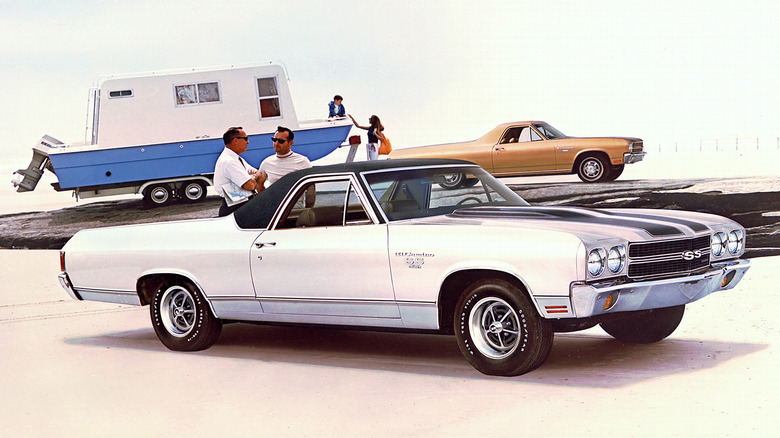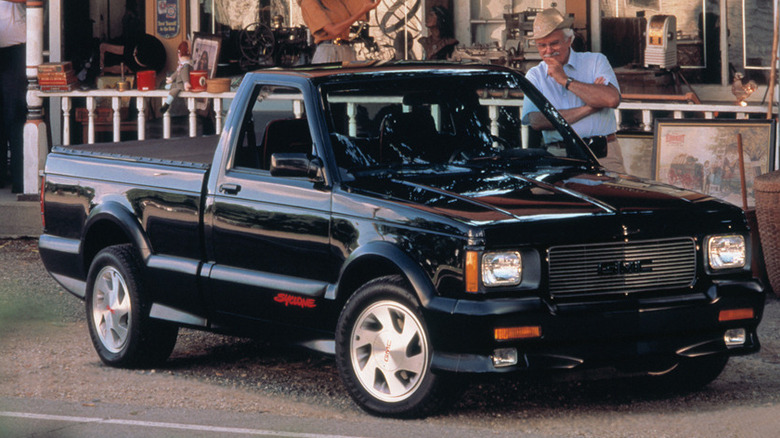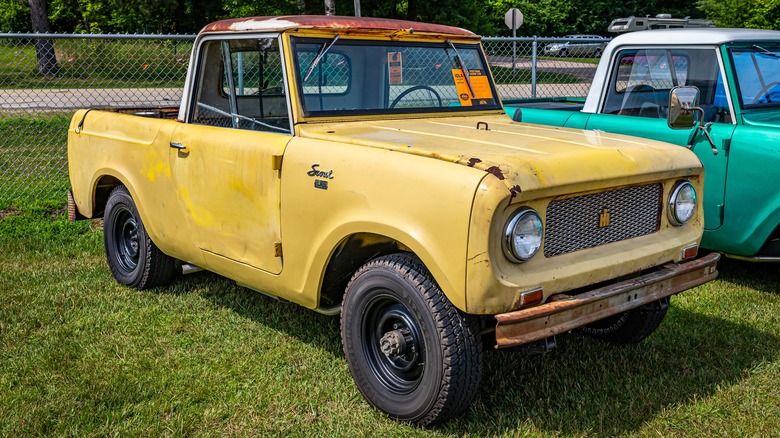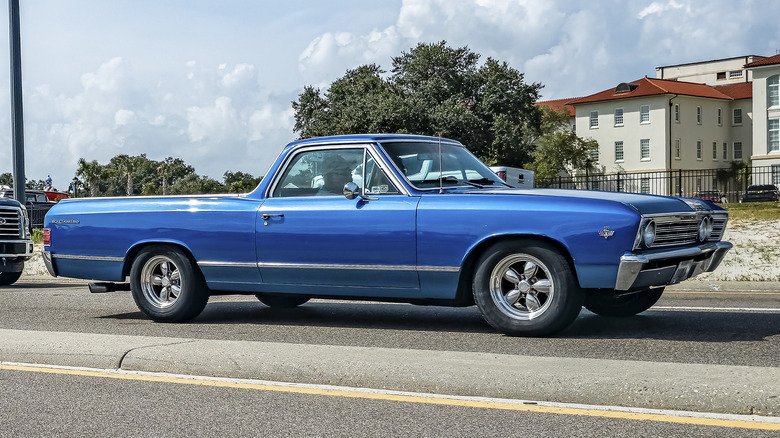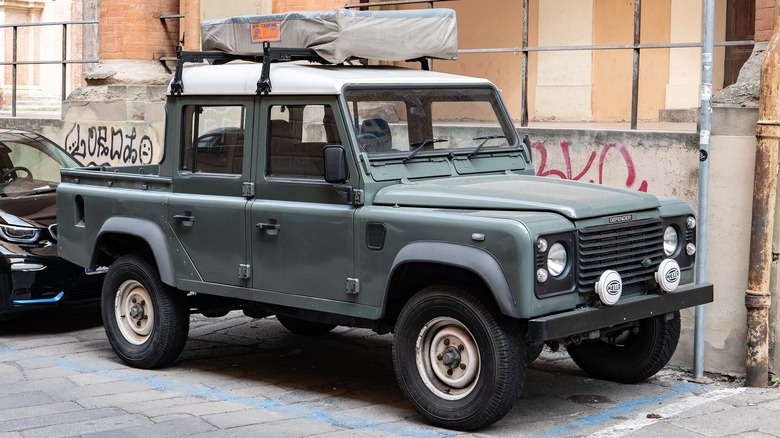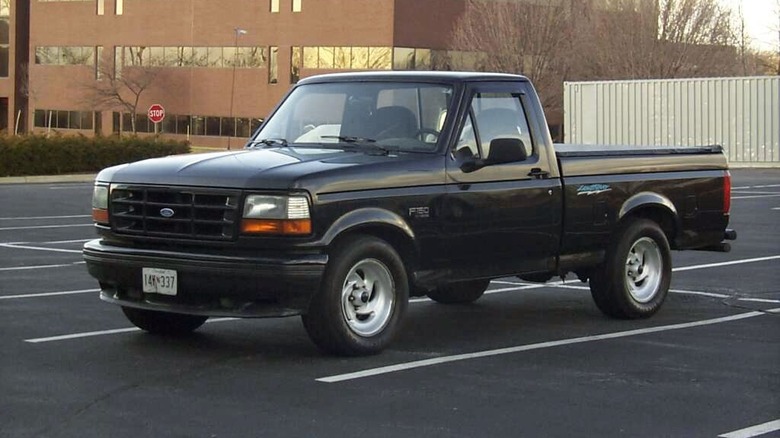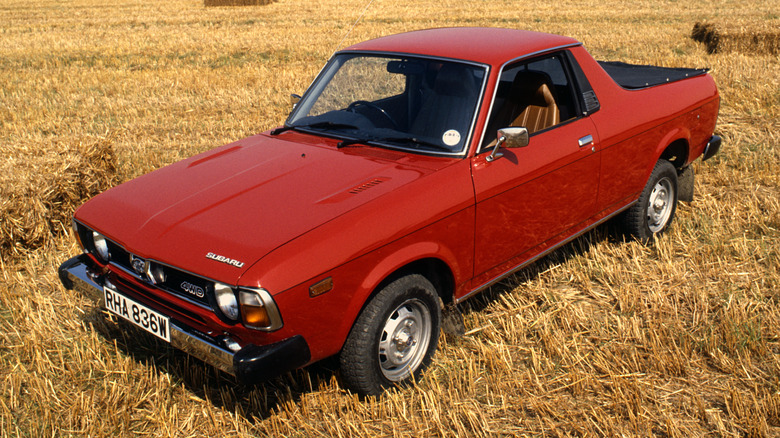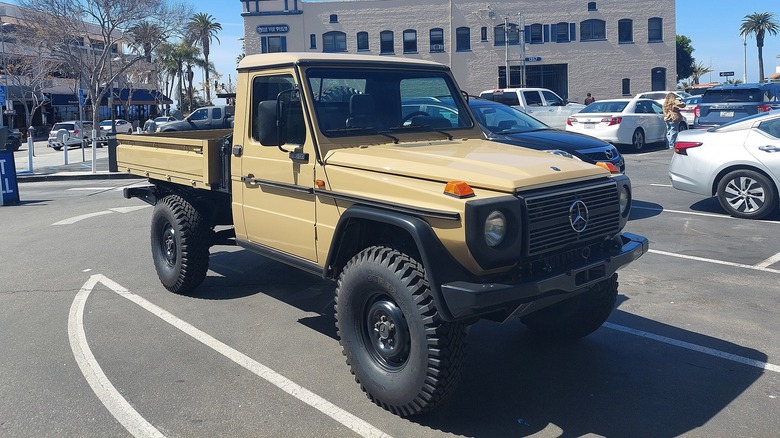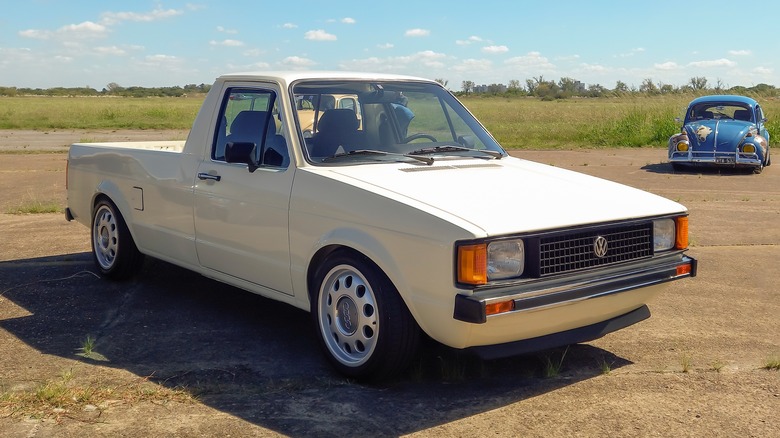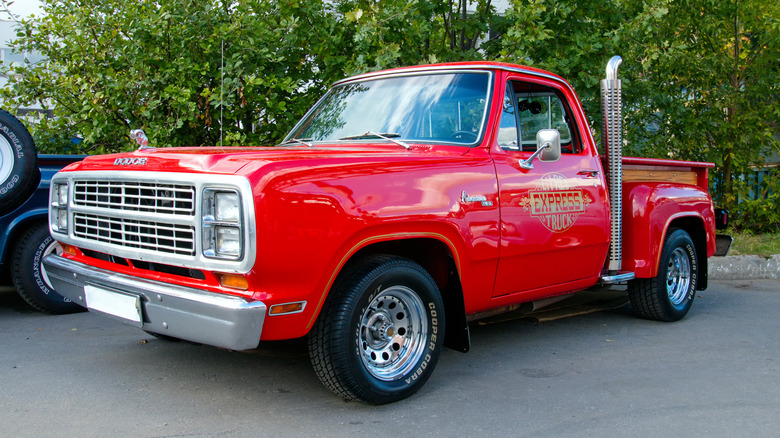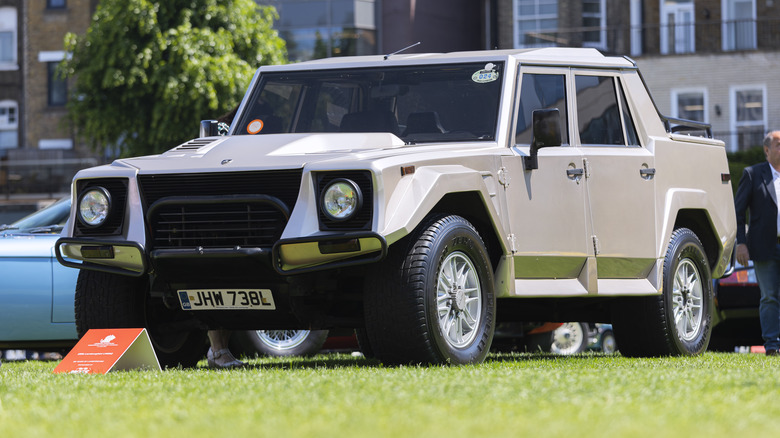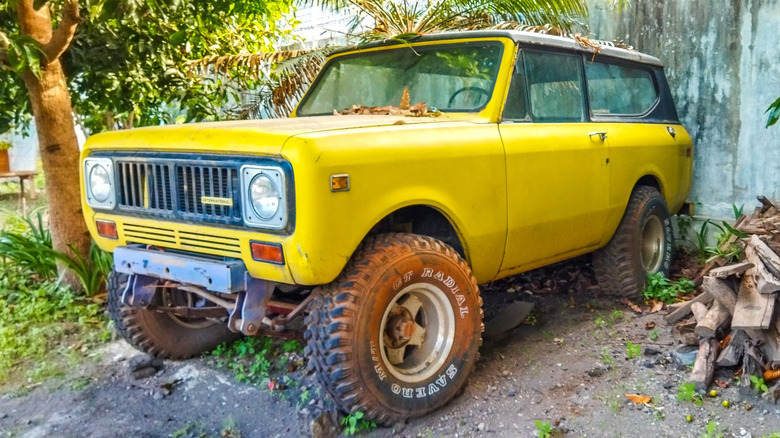10 Classic Trucks That Deserve A Modern Refresh
Reintroducing a classic nameplate can be a very lucrative move for a car manufacturer. Take, for example, the Ford Bronco. It's an SUV that draws very heavily on nostalgia -– nowhere more explicitly than in the recently launched Bronco Heritage Edition –- yet it's proved consistently popular since launch. It's not just SUVs either, with everything from the Alpine A110 to the VW ID.Buzz drawing inspiration from past classics to give new models an extra layer of appeal.
Truck manufacturers aren't immune to the trend either, with the Jeep Gladiator borrowing its name from a '60s classic. Aside from the Jeep, there are plenty more classic nameplates that are ripe for a refresh, although some seem more likely than others to make a return.
Nonetheless, these 10 classic trucks would arguably all make great starting points for modern equivalents to be developed –- and if the rumors are true, a few of them might already have successors in the works.
GMC Syclone
The story of the GMC Syclone is a surprising one — it nearly didn't get built, and wasn't originally destined for the GMC brand at all. However, when it did make it to production it kickstarted the performance truck trend, with the public and press alike shocked at its performance. A test by Car and Driver famously compared the Syclone to a Ferrari 348, finding the truck to be the faster of the two in quarter mile testing. For a production truck with a somewhat usable bed, this was unheard of at the time.
Still, the Syclone was an inherently compromised truck, with its low ride height and uncomfortable ride making it unsuitable for what most owners would consider true "truck stuff." Of course, that didn't really matter –- the selling point of the Syclone was that, for the first time, a production pickup could keep up on the road with an Italian exotic that cost five times as much.
While there are plenty of high-powered trucks on the market today, none are quite like the Syclone. For starters, they're all significantly larger, and focused primarily on high-speed off-road escapades rather than highway performance. They're also generally more expensive: the Syclone's $26,000 starting price in 1991 translates to around $60,000 in today's money. A Ford F-150 Raptor, for comparison, starts at around $80,000 and stretches into six figures for the most powerful version.
International Harvester Scout
The International Harvester Scout proved to be ahead of its time, as it was available as an SUV long before SUVs became the sales chart-topping segment they are today. The Scout was also available in pickup form, with a simple but tough design that acted as an alternative to products from the leading American automakers. It has retained a cult following despite being out of production for many decades now, although it appears that it might not be that way for much longer.
The marque is now owned by Volkswagen, which in 2023 announced plans to launch a successor to the Scout in the near future. Reports have suggested that the new Scout will be electric, with the brand planning to build a factory in North America and have production underway as soon as 2026. For now, no further details have been given -– there's no indication whether the Scout will be brought back as a truck or just an SUV, or any indication on pricing. Still, it seems like a modern refresh of this classic off-roader might be closer than many enthusiasts originally thought.
Chevrolet El Camino
It's one of Chevy's most iconic classic nameplates, and yet one that hasn't made a return since the much-diminished final generation model was killed off in the '80s. The '68 to '72 El Caminos remain the best of the breed, combining truck practicality, car-like drivability, and in top-spec form, tire-smoking power. The idea of combining the front end of a car and the rear of a pickup wasn't a unique one -– Ford already had the Ranchero –- but the El Camino proved to be more popular than its Blue Oval-badged rival.
Despite never making a comeback in America, the tire-shredding, car-like pickup has lived on until very recently in Australia. In fact, the last example of the 635 horsepower Holden HSV Maloo GTSR W1 only rolled off the production line in 2017. Holden was GM's long-standing Australian subsidiary, yet GM never brought the Maloo stateside.
That's despite the fact that the sedan it was based on, the Commodore, was sold briefly in America as the Chevrolet SS. Why GM chose to bring only the sedan to America rather than the pickup truck remains a mystery, but with Holden shuttered and GM's Australian production facilities wound down, it seems that any hope of a V8-powered El Camino revival is already gone.
Land Rover Defender Pickup
The modern relaunch of the Land Rover Defender has been a huge success, with the brand reporting record revenues driven partly by exceptionally high demand for the SUV. A choice of three Defender models is available to buyers, with the 90 the smallest, the 110 pitched as the go-to option for most people, and the 130 for those who need the most space. SlashGear has spent time with all three versions of the Defender, most recently with the Defender 130, and we've come away consistently impressed.
However, there's one thing missing from the current Defender range: a pickup truck. The classic Defender was offered in both SUV and pickup variants, and although reports have indicated that a pickup could be launched in the near future, there has been no confirmation from Land Rover as of this writing. Given the high demand and long waitlist times for Land Rover's current models, however, it's possible that the company is simply dealing with the backlog before launching any new models. If that's the case, a pickup variant may well break cover sooner rather than later.
Ford F-150 SVT Lightning
Ford reused the Lightning name for its electric pickup truck, but long before the idea of a near-silent, emissions-free F-150 became a production reality, the original Lightning was a V8-powered street truck. It was launched in 1993 and featured a 5.8L Windsor V8 engine making 240 horsepower mated to a four-speed automatic transmission. Yet, with a 5,000 pound towing capacity and standard size bed, it still retained much of its practicality as an everyday pickup.
Over 11,500 first generation examples were built over three model years, before the SVT Lightning was temporarily discontinued in preparation for the launch of the new 1997 F-150. A second generation truck was launched in 1999 featuring more power and a new, more aerodynamic body kit, but after its discontinuation in 2004, no successor has emerged. That is, until the electric F-150 borrowed the Lightning name.
While the top-spec electric Lightning produces up to 580 horsepower, it's hard to argue that it's a true successor to the '90s original. With collector interest in the first generation increasing and values on the rise, it stands to reason that a new F-150 street truck -– Lightning name or not –- might garner interest from buyers turned off by the off-road focused trucks that dominate the market today.
[Featured image by Rurik via Wikimedia Commons | Cropped and scaled | Public Domain]
Subaru Brat
With Ford's relaunch of the Maverick so successful that the company had to temporarily pause orders for the truck in 2023, there's an argument to be made that reviving the Brat could be just as lucrative for Subaru. The quirky '80s classic is best remembered for its second row of seats, which were mounted into the bed to avoid paying the Chicken Tax. The idea was that owners would remove the seats after purchase and use the truck as a standard pickup, while the loophole would ensure that the Brat remained competitive price wise with domestically made pickups.
The Brat proved a niche hit, finding favor with some high profile faces. Former U.S. President Ronald Reagan was known for owning a Brat, using it to drive around his Californian ranch. It was discontinued from the North American market in 1987, and although Subaru briefly re-entered the pickup market with the Baja, no modern equivalent is on sale today.
Subaru has retained its reputation as a maker of tough, reasonably priced vehicles, and it currently markets a range of SUVs and crossovers. So, it's not too much of a stretch to think that the automaker could build a pickup on one of its existing platforms -– the Baja, for example, was based on the Outback. However, there has been no indication that the company is planning such a move to date.
Mercedes-Benz G-Class
Mercedes recently took the wraps off its first electric G-Class, the 2025 G 580, which promises a familiar G-Wagon experience but with zero emissions. It's the latest development in the automaker's ambitious electrification plans, and will be sold alongside the gas-powered SUV when it hits dealerships in late 2024. Evidently, Mercedes isn't afraid to expand the lineup of the bestselling luxury off-roader, but so far, a pickup variant remains off the cards, at least in showrooms.
The G-Class has been sold in various commercial and military body styles over its decades on sale, with those styles often significantly different from the consumer G-Class. One of the most sought after styles is the G-Class pickup, which was primarily made for military use but has since become desirable among private collectors.
Various aftermarket tuners also offer pickup conversions for the consumer G-Class, albeit at a significant cost. Brabus, Mansory, and Pit26 all offer such conversions, yet Mercedes hasn't expressed any interest in bringing a factory-built pickup to market, at least not in mass-produced form. A decade ago, it offered the mad G63 AMG 6×6 in extremely limited numbers, and they're now highly sought after, consistently selling at auction for $600,000 or more. Despite the clear demand, however, it seems Mercedes has no plans to launch a G-Class pickup anytime soon.
[Featured image by PLawrence99cx via Wikimedia Commons | Cropped and scaled | CC BY-SA 4.0]
VW Rabbit Pickup
While the first generation Volkswagen Golf was an unabashed sales success in Europe, its U.S. market cousin, the Rabbit, wasn't quite such a hit. Searching for a way to make the car more appealing, Volkswagen chopped off the rear and replaced it with a pickup bed, creating the Rabbit Pickup, which launched in 1979. It was enough of a success to remain on sale for five years, although it was never truly a hit.
Nonetheless, when American sales ended, Volkswagen transferred production to South Africa, where it proved much more successful. It remained on sale in various updated forms through to the mid '00s. A European version of the truck was also built and sold as the Caddy across the continent between 1982 and 1992. It was small, affordable, and easy to fix, since it used ubiquitous Golf parts. The modern small pickup segment in America is today dominated by Ford and Hyundai, but there were formerly plans for Volkswagen to re-enter the fray.
Volkswagen USA had reportedly been evaluating the idea of a small pickup until early 2024, but eventually decided against pressing ahead with production. The automaker already sells a pickup in other markets, the Ford Ranger-based Amarok, but the Blue Oval reportedly wasn't too keen on launching a VW-badged rival to its compact truck on its home turf. With a Ranger-based truck out of the question in America, VW had little choice but to abandon its pickup plans.
Dodge Li'l Red Express
The Dodge Li'l Red Express was the product of a loophole in regulations that let Dodge bypass the restrictive emissions laws of the '70s. Vehicles weighing over 6,000 pounds did not have to meet the same standards as most cars and trucks, and so Dodge could get away with putting in a far more powerful engine than would have otherwise been allowed. This spawned the brand's series of so-called Adult Toys, with the Li'l Red Express the rowdiest of the bunch.
It was louder than necessary –- both in terms of its appearance and its exhaust note -– and it was more powerful than necessary too. It was the kind of truck that Dodge built simply because it could, and buyers lapped it up. The Li'l Red Express remains a cult collectors' item today, and could have easily been revived. A similarly loud, overpowered successor could have served as the road-oriented counterpart to the Ram TRX, but with TRX production ending after the 2024 model year, the window for a potential revival has almost certainly already passed.
Lamborghini LM002
Nicknamed the Rambo Lambo, the Lamborghini LM002 was ahead of its time in predicting that wealthy clientele would eventually develop a seemingly insatiable demand for ultra-expensive luxury off-roaders. The bestselling Lamborghini Urus SUV is considered to be the successor of the LM002, although that claim comes with an asterisk. Most examples of the LM002 came with a small, high-sided truck bed -– a side effect of it being developed for military use –- whereas the Urus is only available as an SUV.
Sure, the Urus is just as mad as the original Lambo off-roader, with more power than anyone can realistically justify and a surprising level of capability in the dirt. It's also just as eye-wateringly expensive as its predecessor. However, there's no bed to chuck in cargo, people, or anything else, and for that, it seems that Lamborghini is missing a trick.
Overpowered pickup trucks are already in high demand, and so by making a pickup variant of the Urus, and thus making it a true successor to the LM002, the automaker should have a hit on its hands. The Urus is already outrageous, and so making it even more outrageous should surely make it more appealing to Lambo's more attention-seeking clientele.
How we selected these classic trucks
To create our list of classic trucks worthy of a contemporary refresh, we looked at a wide variety of factors. First, we considered iconic trucks from past eras whose nameplates still held significant cultural cache. We then expanded our search to find lesser-known models that could inject new design concepts into a crowded market. After that, we looked at trucks that had proven their appeal in the past with strong sales when they first hit the market or years later through continued interest from collectors.
As we've mentioned while looking at these trucks in detail, we can't guarantee that all of these classic trucks will receive a modern makeover — but we certainly would love to see it.
